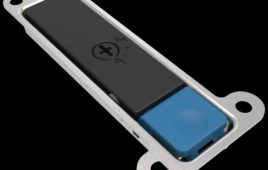Wireless industry groups praised efforts by the Federal Communications Commission to hold a spectrum auction in the 28 GHz band later this year.
But a panel of experts at the Competitive Carriers Association’s Mobile Carriers Show in Las Vegas suggested the planned auction won’t actually offer many new opportunities for operators.
“It’s almost fully licensed right now,” Steve Sharkey, T-Mobile’s Government Affairs VP for technology and engineering policy, said of the 28 GHz band.
In the nation’s top 50 markets, he said, only 2 percent of the band is available. But a subsequent auction planned for the 24 GHz band will offer more “greenfield space” to carriers, and he noted that other spectrum bands — especially 39 GHz — offer greater opportunities to companies.
“I hope there’s some openness to … adding additional bands into that auction,” Sharkey said.
Kevin Zvokel, the North American head of networks for Ericsson, added that the 28 GHz auction would still benefit capacity in urban areas and offer additional use cases in more sparsely populated areas, while Tom Peters, a senior adviser with Hogan Lovells and former chief engineer at the FCC’s Wireless Telecommunications Bureau, said that the agency’s moves are promising — even if he expressed skepticism that a November auction actually goes forward.
“It’s good to have ambitious goals,” Peters said.

Panelists at the CCA’s Mobile Carriers Show discuss upcoming spectrum auction. (Credit: Andy Szal)
Taking Advantage of Mid-Band
Although the FCC’s efforts in high-band spectrum gained the most attention of late, the agency continues to develop rules for the 3.5 GHz band, and officials are also exploring opening additional avenues in nearby spectrum.
Sharkey reiterated T-Mobile’s position that licenses in the Citizens Broadband Radio Service band should cover longer periods of time and larger geographic areas. Industry supporters believe those changes would spur needed investment in a band that panelists called a sweet spot for 5G networks around the world.
In addition to altering the license terms, Peters said current limits on power use in that spectrum is preventing carriers from reaching their full potential in those bands.
FCC Chairman Ajit Pai said last month that the agency would seek to make more spectrum available from 3.7 GHz to 4.2 GHz, while Phillip Berenbroick, senior policy counsel at advocacy group Public Knowledge, noted this morning that the NTIA is looking at spectrum just below the CBRS band.
“This is the beachfront property that all the carriers want,” Zvokel said of mid-band spectrum.
Small Cell Changes
The panelists also discussed additional recent, as well as forthcoming, rules changes from the FCC.
Sharkey said this month’s vote to lift federal oversight of small cell installations was a welcome change from a system that was frequently “abused,” while Zvokel said “it already has” made his job — which can see siting delays from weeks to years — easier.
The other panelists, meanwhile, were less enthusiastic.
Berenbroick noted that consumers groups largely sat out the rule-making process, but tribes and local historic groups voiced strong opposition about the proposal and the process of implementing it.
He predicted that litigation would tie up the rule changes for a significant amount of time.
Peters, meanwhile, said the industry “may need to think about alternative solutions” to prevent multiple carriers from installing their own equipment at the same sites — all to cover small geographic areas.
“That’s a lot of small cells,” Peters said.
Sharkey said T-Mobile already has a team working with communities to help resolve any equipment or siting issues.
“Nobody wants to steamroll municipalities, but there’s got to be a process,” he said.
USF Funding Proposal
Sharkey noted that T-Mobile receives Universal Service Funding and offers ZTE phones to its customers — policies that could put the carrier in the crosshairs of a newly announced FCC proposal.
Pai said the commission would vote next month on a measure to ban Universal Service Fund dollars from going to companies deemed “national security” risks — widely assumed to be Huawei and ZTE due to concerns over their ties to the Chinese government.
Sharkey said the FCC must resolve questions about how a security risk is determined and how to implement that policy. He suggested that network equipment is far different than devices that go to end-users.
“We don’t think there’s a security threat that they pose,” Sharkey said of T-Mobile’s ZTE phones.
All the panelists shared the view that a “nationalized” 5G build-out floated by the White House would not happen, but conceded that concerns over winning the race to 5G was real and that the need to reach all areas of the country, Berenbroick said, was “an important conversation to have.”
Filed Under: Telecommunications (spectrums)




